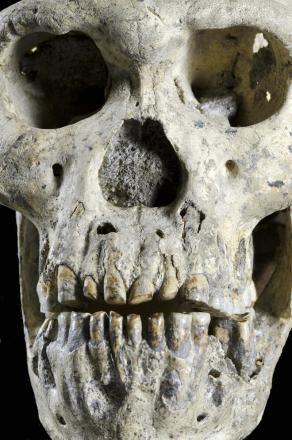Some paleoanthropologists from the University of Zurich found a very complete hominid skull in Dmasini, Georgia. This is the fifth skull they found in the same excavation.
This skull shows different characteristics, it has a long face and the smallest brain within all the group, and it is not very similar comparing with the other four skulls.
This traits are very important because in fossils found in Africa athropologist used this characteristicts to difference between species. As Ponce de León said “Had the braincase and the face of the Dmanisi sample been found as separate fossils, they very probably would have been attributed to two different species.» But in this case, the fossils have been found in the same place, and after doing some statistical analyses Zollikofer summarizes the results «Firstly, the Dmanisi individuals all belong to a population of a single early Homo species. Secondly, the five Dmanisi individuals are conspicuously different from each other, but not more different than any five modern human individuals, or five chimpanzee individuals from a given population».
This variability on the characteristics of the skulls suggests that Homo habilis, Homo rudolfensis and Homo erectus, the species that were existing worldwide in that era, may represent a single specie.
Unique Skull Find Rebuts Theories On Species Diversity in Early Humans
Related articles
- Did the human family tree just get simpler? (nbcnews.com)
- Skull suggests three early human species were one (nature.com)
- Beautiful Skull Spurs Debate on Human History (news.nationalgeographic.com)

